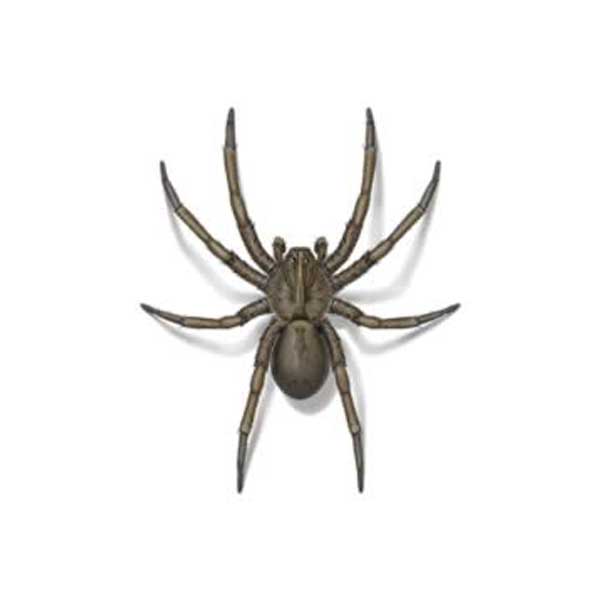Table Of Content

Hunting spiders are outdoor spiders that may wander indoors accidentally. Probably the most notorious of all spiders, Sydney Funnel-webs have a fearsome reputation. White Porch Spiders are commonly found living on the outside of houses in parts of Eastern Australia. There are eight species of mouse spiders in Australia and they are widely distributed across the mainland. The Spotted ground spiders Habronestes and Storena are two genera of spiders in the family Zodariidae.
Related Pests
They are mostly harmless to humans but are feared because of their large size and their fierce namesake. Wolf spiders are commonly known as household pests as when the weather starts getting colder, they look for warm places to overwinter in homes. Wolf spiders are commonly found around doors, windows, house plants, basements, garages and in almost all terrestrial habitats. Wolf spiders do not spin a web, instead, they roam at night to hunt for food.
Orb Weaver Spider
Also called crevice weaver spiders, the brown spiders thrive in warm environments. As we grow older, it’s a great time to reevaluate our choices and habits. In this article, we’ll explore 18 things you may still be doing even though you may be too old. Each situation is unique, but the following guidelines describe the integrated techniques that can be used to control spiders. Elimination of all spiders from a home is difficult and unnecessary.
$99 Initial Pest Service!
Here come the spiders: What to know about Oregon’s emerging creepy-crawlies - KOIN.com
Here come the spiders: What to know about Oregon’s emerging creepy-crawlies.
Posted: Wed, 24 Aug 2022 07:00:00 GMT [source]
These spiders are often big and hairy which alarms some people, but they are primarily nuisance pests. Over 100 species of wolf spiders are found in the United States and Canada. The spiderlings may then disperse or remain with stay in the web of the mother for some time, catching the smaller prey that the larger spider would ignore.

Wolf spiders live in many regions of the United States and are typically concentrated in Missouri, Texas, and California. They are commonly found in open areas such as grasslands and meadows where there are plenty of insects to feed on. They can also harbor in firewood, ground tunnels; or under leaf piles and other ground clutter. Two wolf spider species are known to be predators of cane toads.

Notorious and rightfully feared, the black widow spider is the stuff of legend and myth. Said to eat her mate after their “romantic business” is complete, this rather violent dating ritual happens in nature less than we might think. The Black House spider is venomous, however, it is not considered dangerous to humans, except for possible infection of the bite. Black House Spiders are quite shy, only coming out of the nest to capture their prey, then quickly retreating. In the house, Black House spiders feed upon household pests attracted to the light of windows and lamps, where the spiders tend to build their webs. Electric lights attract their other prey which also includes moths and mosquitoes.
Wolf spiders are moderate to large-sized spiders (1/4- to 1-inch long) with dark brown and slightly hairy bodies. Grass spiders (a common funnel weaver) build their horizontal webs in the short grass of lawns. They have three light colored and two dark colored stripes behind the head. Because wolf spiders feed on a variety of insects, including crop pests, they can be beneficial. Wolf spiders can bite, but it's extremely rare to experience a wolf spider bite unprovoked.
Sign up for the Live Science daily newsletter now
If you suspect one of these spiders has bitten you, it is important to seek medical attention so that the doctors can determine the best course of treatment based on the species. Like all spiders, the wolf spider has eight legs, but it also has an additional two tiny leg-like appendages (pedipalps) extending out the front of its face. Another identifying feature of common house spiders is their webs. For example, the common house spider and black widow spin cobwebs or tangled webs. In addition, some outdoor spiders like orb weavers can make their way indoors and spin intricate webs, creating a spoked, open web to trap insects. Identifying spiders commonly found in homes is vitally important.
Yellow sac spider
Wolf spiders eat ground-dwelling insects and other spiders, including crop pests. Luckily, wolf spiders prefer a solitary existence and aren’t aggressive toward humans. Wolf spiders have excellent eyesight, which is why they’re such good hunters.
Non-aggressive orb weaver spiders only occasionally find their way into homes. However, you will notice them due to the large, sheet-like spoked webs they spin. In the house, the yellow sac spider typically lives in the corners of walls and ceilings, where it stays undisturbed. However, they are usually in gardens, hiding under foliage, boards, leaf litter, and stones. Therefore, it’s always best to use gloves when working in the garden. Other types of Arachnids include mites, ticks and harvestmen (aka “Daddy long-legs").
Symptoms such as nausea, vomiting, sweating and giddiness are occasionally recorded. In a few cases skin lesions have developed after multiple bites. The jorō spider‘s humongous size, as well as its ability to balloon through the air and build cobwebs the width of a Mack truck, have made this spider an internet sensation. Females often overwinter in residential areas, startling unsuspecting homeowners when they run from under a board or other ground based object. In 1990 the South Carolina designated the Carolina Wolf Spider as the official state spider. Amanda Rose Newton is a pest specialist and horticulture expert, reviewing pest control and gardening content for The Spruce's Cleaning and Gardening Review Board.
They specifically prey on woodlice and are not known to be harmful to humans. Argiope (ar-JYE-o-pee) spiders or garden spiders are also orb weavers. The large, black and yellow spiders usually are found in late summer in the center of big, round, flat webs.
Mothers are known to exhibit aggressive behavior when carrying their egg sacs. They sometimes need to drop their egg sacs to more easily escape predators. If this happens, females will search furiously to find them again and may even pick up another wolf spider's abandoned egg sac to care for. However, the spiders in the study cared for unrelated eggs as if they were their own when they did pick them up.
Hobo spiders are a type of brown funnel web spider with distinctive chevron, V-shaped patterns on their abdomens. Identifiable features of hobo spiders are two dark stripes and one lighter stripe on the cephalothorax, light brown legs with no bands, and visible spinnerets at their posterior. Although common in homes in the southern states, it’s only the male house spiders that are seen. The spiders tend to scurry across floors and can appear aggressive. Neither black widow spiders or brown recluse are native to the upper Midwest and are rarely encountered. The female spider never leaves her web unless forced to, but keeps on adding new layers - old webs can look grey and woolly from constant additions of silk.
As with most spiders, the males are smaller (10 mm) and have longer legs in relation to their body size. Longinqua is slightly smaller (14 mm) with a greyish carapace and black-brown legs. Brown wolf spiders can be confused with more venomous brown recluse spiders, especially in houses. Fast-moving spiders on the ground are more likely to be wolf spiders, as brown recluse spiders are very rarely seen out in the open, according to the University of Kentucky.


No comments:
Post a Comment